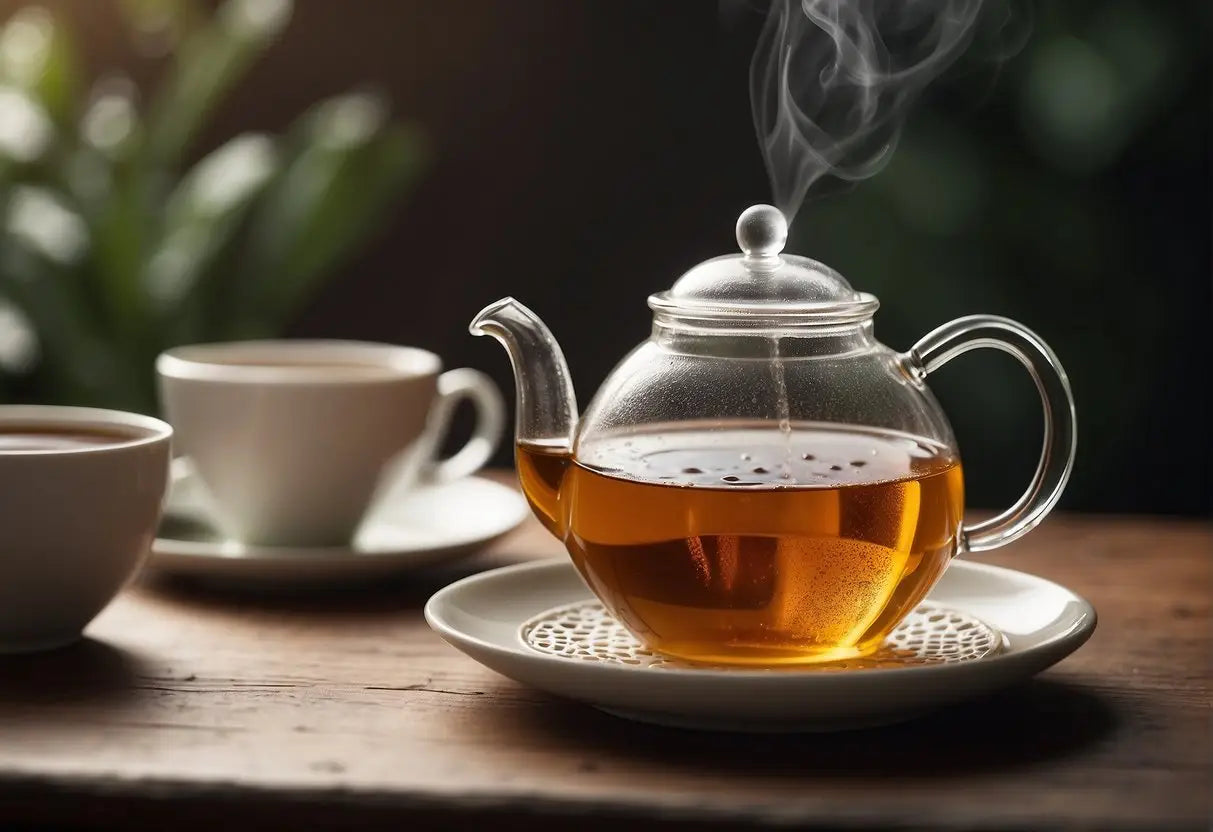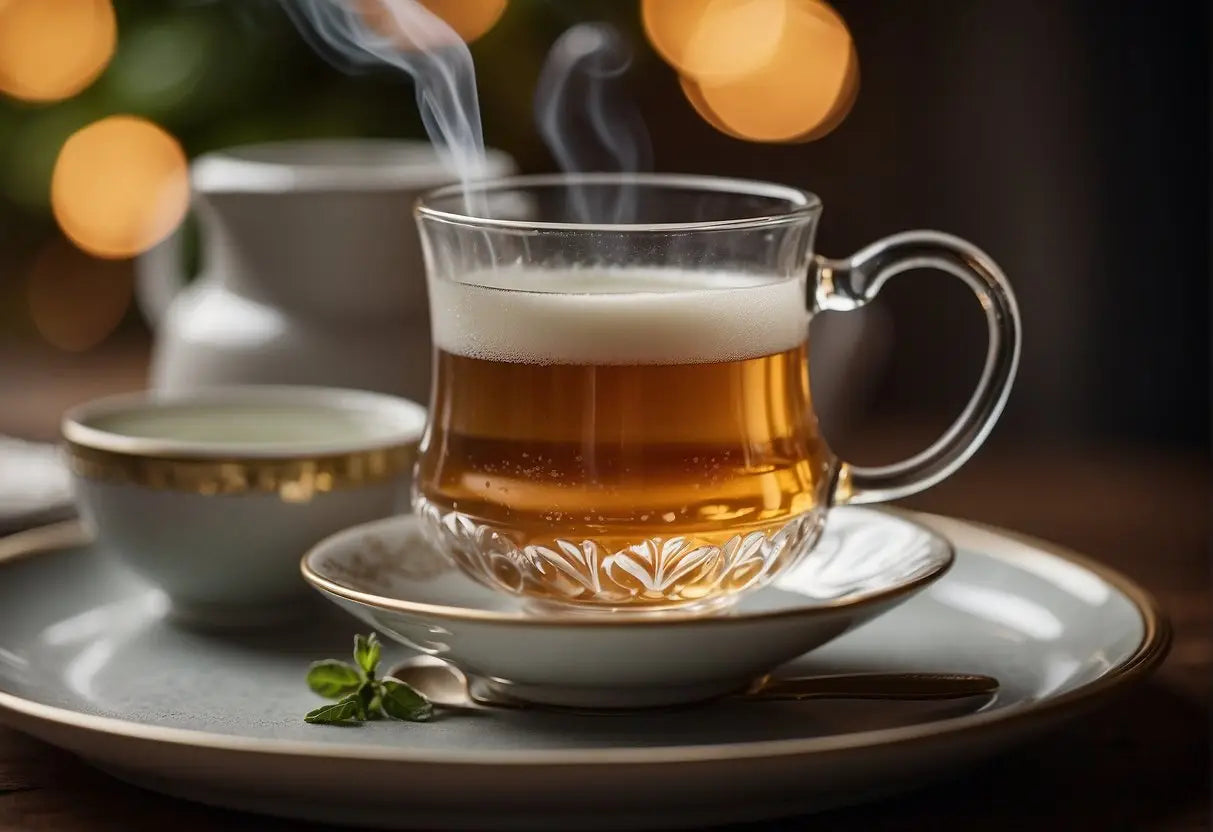How to Drink Earl Grey Tea
Earl Grey tea is a distinctive blend known for its citrusy aroma and flavorful profile. Your appreciation for Earl Grey will deepen through an exploration of its origins, the key ingredients that define its taste, and the nuanced flavors that make it a beloved choice among tea enthusiasts.
Origins and History
Earl Grey tea dates back to the early 19th century and is named after Charles Grey, the 2nd Earl Grey, who was Prime Minister of the United Kingdom. There are several stories about its origin, but it is widely believed to have been a gift from a Chinese mandarin to Earl Grey. It has since become a staple in British tea culture.
Key Ingredients
- Black Tea: The base of Earl Grey is black tea, typically a blend of various black teas from India, Sri Lanka, or China.
- Bergamot Oil: The defining feature of Earl Grey is the addition of bergamot oil, extracted from the rind of the bergamot orange, which imparts a vibrant citrus fragrance.
Flavor Profile
Earl Grey tea offers a bold and bright flavor, characterized by its:
Bestsellers
- Citrus Notes: Deliver a fresh and uplifting taste.
- Floral Accents: Can provide a subtle hint of elegance to the robust tea.
- Malty Undertones: Common in the black tea base, adding depth to the overall flavor.
Preparation Essentials

Proper preparation is essential to enjoy the full flavor of Earl Grey tea. Follow these steps to ensure a satisfying cup.
Selecting the Right Tea
When choosing Earl Grey, opt for loose leaves over tea bags for a richer taste. Select high-quality leaves that smell fresh and have a bright appearance. Avoid tea that looks dull or has a stale scent.
Water Quality and Temperature
Use fresh, cold water for the best results. If your tap water is hard or has a strong taste, consider filtered or bottled water. Heat the water to just before boiling, ideally between 208°F to 212°F. Water that is too hot can scorch the leaves, affecting the tea's delicate flavor.
Steeping Time
Steep your Earl Grey for 3 to 5 minutes. For a stronger tea, increase the steeping time rather than the amount of tea leaves, which could lead to bitterness.
| Steeping Time | Result |
|---|---|
| 3 minutes | Lighter flavor |
| 4 minutes | Balanced flavor |
| 5 minutes | Stronger flavor |
Brewing Earl Grey Tea
Brewing Earl Grey Tea requires attention to detail to enjoy its full citrus-aroma and deep flavor. Selecting the right type of tea and brewing techniques enhances the experience.
Loose Leaf vs Tea Bags
Loose Leaf:
- Quality: Generally offers a higher quality with fuller flavor and aroma.
- Quantity: Use 2 grams of loose leaf tea per 8 ounces of water.
Tea Bags:
- Convenience: Pre-measured and easy to use.
- Steep Time: Typically steep for 3-5 minutes.
Brewing Techniques
- Water Temperature: Heat water to just below boiling, around 208°F (98°C).
- Steep Time: Loose leaf should steep for 3-5 minutes, while tea bags may only need 2-4 minutes.
- Heat water using a kettle.
- Pour the heated water over the tea.
- Allow to steep for the recommended time.
- Remove the tea leaves or bag from the water.
Teapot and Teaware Choices
- Material: Ceramic or glass teapots are preferred for Earl Grey.
- Size: Choose a teapot that corresponds with the quantity of tea being brewed.
| Teapot Material | Benefit |
|---|---|
| Ceramic | Retains heat well |
| Glass | Does not retain flavors |
- Pre-warm the teapot by rinsing it with some of the hot water.
Serving Earl Grey Tea
When serving Earl Grey tea, the focus is on maintaining its distinct flavor and aroma. Preparation techniques and pairings can significantly enhance the experience.
Traditional Serving Methods
To experience Earl Grey in its classic form, steep your tea for three to five minutes in freshly boiled water which should be around 208°F (98°C). You may adjust steeping time for a stronger or more delicate flavor based on your preference. Serve in a pre-warmed teapot or directly in fine china to preserve the heat.
- Water Temperature: 208°F (98°C)
- Steeping Time: 3-5 minutes
- Serving Vessel: Pre-warmed teapot or fine china cup
Accompaniments and Pairings
Earl Grey tea pairs excellently with citrus or buttery pastries, enhancing its bergamot notes. For a savory option, smoked salmon sandwiches or quiches complement the tea's complexity.
-
Sweet Pairings:
- Lemon drizzle cake
- Butter croissants
-
Savory Pairings:
- Smoked salmon sandwiches
- Cheese quiche
Customizing Your Tea Experience
In your journey with Earl Grey tea, personalizing your brew can enhance your drinking experience. Whether you prefer a traditional touch or a modern twist, these adjustments can cater to your unique tastes.
Lao Ban Zhang
Milk and Sweeteners
Adding milk to Earl Grey tea softens its bold flavor and adds a creamy texture. The amount varies by preference, but start with a splash and adjust to suit your taste. If you fancy sweetness, honey or sugar can complement the citrusy notes of the tea. Begin with a teaspoon and modify according to your desired sweetness.
- Milk options: Whole milk, half-and-half, almond, soy
- Sweetener options: Honey, white sugar, brown sugar, stevia
Iced Earl Grey Tea
Convert your Earl Grey tea into a refreshing cold beverage by serving it iced. Brew the tea as usual, then let it cool to room temperature before chilling it in the refrigerator. Serve over ice and garnish with a slice of lemon or a sprig of mint for a refreshing twist.
-
Iced Tea Tips:
- Brew with double the tea leaves for a stronger flavor.
- Cool before refrigerating to prevent cloudiness.
Earl Grey Tea Blends and Variations
Explore various Earl Grey blends to discover different flavors and aromas. Some popular variations include:
- Lady Grey: A lighter version with hints of orange, lemon, and lavender.
- French Earl Grey: Blended with rose petals for a floral essence.
- Earl Grey Green: A blend using green tea leaves for a lighter, earthier taste.
You can also create your own blend by adding other tea leaves or herbs to craft a unique concoction. Experiment with proportions to find your perfect match.
Frequently Asked Questions

In this section, you'll find concise answers to common inquiries about Earl Grey tea, including preparation tips and consumption preferences.
What are the benefits of drinking Earl Grey tea?
Earl Grey tea is known for its potential to aid in digestion, boost the immune system with its vitamin C content, and improve oral health due to the presence of catechin. It also offers a distinctive flavor from the oil of bergamot.
Can you advise on the best way to add milk to Earl Grey tea?
To add milk to Earl Grey tea, pour the tea into your cup first, then add milk gradually until the desired creaminess is reached. This prevents the tea from cooling down too quickly and allows for better control over the flavor.
What are the steps to properly infuse loose leaf Earl Grey tea?
To infuse loose leaf Earl Grey tea, start with fresh, cold water and heat it to just boiling. Place one teaspoon of the tea leaves per cup into a tea infuser, pour the hot water over the leaves, and steep for 3-5 minutes depending on desired strength.
How do English people typically enjoy Earl Grey tea?
Many English tea drinkers enjoy Earl Grey tea with a slice of lemon or a bit of milk. However, it is often appreciated plain to savor the distinct bergamot flavor that defines this classic tea.
Is it beneficial to add lemon to Earl Grey tea, and if so, how?
Adding lemon to Earl Grey tea can enhance its citrus notes and provide added vitamin C. Simply squeeze a small wedge of lemon into your tea and stir gently.
What distinguishes organic Earl Grey tea from other types?
Organic Earl Grey tea is made using ingredients that are grown without synthetic pesticides or chemical fertilizers. This distinction can be appealing for those seeking a tea made with more natural agricultural practices.
← Older post Newer post →











